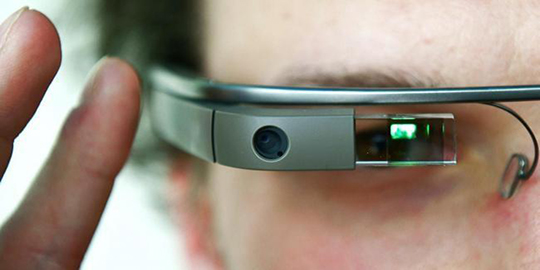
Technology Observatory December 1-7
This week's Technology Observatory brings you the following stories:
● Google Glass to offer a new version with Intel processors
● Jazztel will be the first MVNO to offer 4G
● U.S. schools now buying more Chromebooks than iPads
● One year on and Android 4.4 comes with one in three smartphones
● Amazon to keep on trying with phones – they can afford to
● Mozilla wants Firefox in iOS and it's on its way
● Yota releases YotaPhone 2, its new smartphone with an e-ink rear display
● Tuenti Móvil beats Jazztel and Pepephone as the first MVNO to offer 4G on contract
● Windows 10 to reach the market around September 2015, probably accompanied by Office Touch
Google Glass has clearly lost a lot of its momentum compared to the initial boom, added to which releasing the product in 2014 as promised is no longer on the cards. The device still needs a lot of development to become a complete product. For now, it is little more than a very ambitious experiment, something which is only to be expected from Google X. But it's certainly far from being abandoned as there are still more than 300 Google employees working on the Glass project. Besides, they are about to receive a new version with new hardware. And the most surprising thing of all is the manufacturer of the new processor, which will be Intel no less. Intel hasn't really made the spectacular entry into the world of cell phones and tablets that we might have expected from this great company, but neither is it wasting any opportunities to take a few gambles – this time by offering the processor for one of the most extraordinary gadgets to emerge in recent years, even if the two companies want different outcomes. The positions are clear: Google wants to inject new life into its experiment with smart glasses, while Intel wants to demonstrate that it can make processors for wearables, a growing sector in which it wants to position itself alongside a leading manufacturer.
The race to see which mobile virtual network operator in Spain will be the first to offer 4G services to its customers seems to have a clear winner. Jazztel, currently in the throes of a takeover by Orange, has confirmed that it will be the first MVNO to offer 4G to its more than 1.6 million customers, and to start with completely free of charge. The company chaired by Leopoldo Fernández Pujals hasn't announced an exact date for the arrival of 4G services for its customers, simply that they will be available as from next week. What has been confirmed, though, is that as part of the deal with Orange and the ruling by the national competitions and markets authority CNMC, the mobile virtual network operator will use the French operator's 4G network. This offer of 4G services to its customers, thanks to the agreement with Orange (presumably part of the purchase process), may well force the mobile virtual network operator market to start reaching similar agreements to offer the new generation of networks. The offer of 4G services by virtual operators has partly come about because the CNMC has ruled that operators like Movistar, Orange and Vodafone, with proprietary infrastructure licensed to MVNOs, must give them wholesale access to their 4G networks so that the smaller operators can offer their customers deals that include 4G connectivity. Even so, it's still not clear whether the 4G that will initially be offered free of charge to customers will remain free, or whether Jazztel will introduce an additional fee for 4G services in the future.
According to a study by IDC, in September sales of Chromebooks to U.S. schools outstripped those of Apple's tablet. To be precise, 715,500 Chromebooks were sold compared with 702,000 iPads, demonstrating the spectacular growth experienced by devices with Google's operating system, which have now gained a 25% share of the education market in the United States. There are probably many reasons for this growth, but the one that immediately springs to mind is the fact that the more affordable versions of Chromebook offered by manufacturers like Acer, HP and Samsung are cheaper than the latest generation of iPad with the discount for the education sector. Another is the tablet shape factor, which tends to limit productivity more, while the Chromebook keyboard is essential for carrying out assignments. Which do you think?
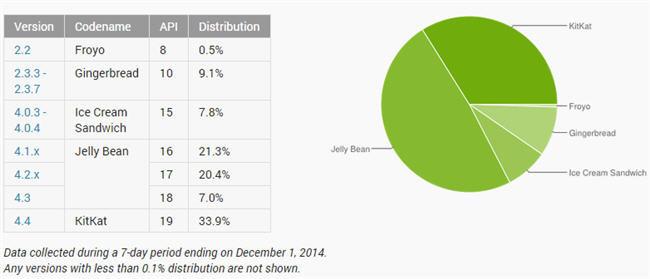
It's more than year since Google released the Nexus 5 featuring the new Android 4.4 KitKat, but apparently that hasn’t been enough time for manufacturers to agree to offer upgrades for their devices. Even so, the market share for Android 4.4 currently stands at 33.9%, which means that it comes with one in three Android terminals but also demonstrates the difficulties still faced by users of these devices who want to enjoy the latest Android version. The situation is improving, but the logical question to ask is whether the widespread adoption of Android 5.0 Lollipop will be as slow as it has been for KitKat. We'll only be able to answer that question in a year's time, but meanwhile we have the new official figures from the Google developer website, which provide an insight into the progress achieved by the different versions of the company's mobile platform. The Jelly Bean (Android 4.1.x, 4.2.x and 4.3) version has a 48.7% share of the market compared with 50.9% last month, while ICS fell from 8.5% to 7.8% this month. Gingerbread is still clinging on (though down from 9.8% to 9.1%), and Froyo hasn't completely disappeared either, with a 0.5% share of the market. There are no figures for Lollipop, but according to Google there's an obvious reason for that: any Android version with a market share of less than 0.1% is not reflected in the results. We think a large number of devices have already upgraded to this version, but the company may well want to wait and publish a more dramatic figure in January, when the new data are released.
In many respects Amazon's phone was a flop: the specialist media didn't like it and the public at large were not very enthusiastic either. The truth is, though, that it was a first step, which had to be taken, and according to Jeff Bezos there will be more to come. The CEO of the U.S. company doesn't seem too perturbed by the initial failure of the product and has invited us to wait for new iterations of the phone and ask him the same question a few years down the road. According to the Amazon chief, the product still needs quite a lot of fine tuning. As for the numbers, covering the relative losses from the phone has cost Amazon around $170 million. The company is a firm believer in the importance of risk-taking, and it's not the first time a mistake has cost millions of dollars. These statements are taken from an interview at the conference organized by Business Insider in New York, at which Bezos commented on the peace of mind that comes from knowing that a company like his can afford to make that kind of mistake, whereas it would have cost a smaller company much more.
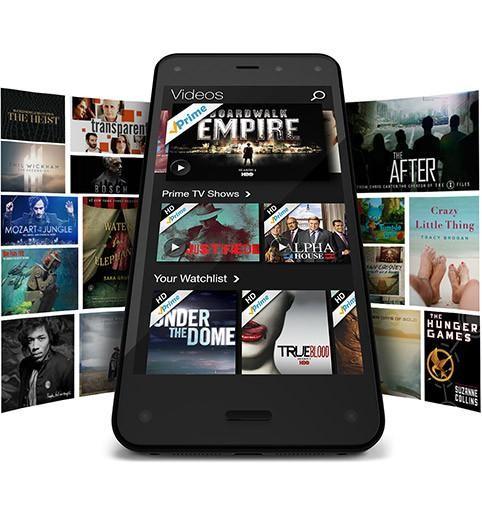
It is estimated – there are no official figures – that in its first month on the market no more than 35,000 units were sold. You can currently find it at the rock-bottom price of $199 for the unlocked version, obviously intended to clear some space in the warehouses. We'll have to keep a close watch on the promised iterations and ask Bezos again in a number of years. No doubt Amazon's ambition and enthusiasm for experimenting will lead to a safe harbor. Will the next Fire phones be less ambitious? The first phone has too many technological novelties. Of course, Amazon didn't want to put just anything on the market, but it might have been better to go for a more affordable phone with good specs, in the same line as the Kindle Fire tablets.
The Apple platform is teeming with applications – there is no doubt about the ease with which it manages to increase the number of its creators – but there are certain kinds of developments which are more difficult to integrate, possibly because of overlaps with the system elements. That's why we haven't seen many web browsers in iOS, initially at least. Now, though, we're beginning to see a new departure in aspects like alternative keyboards, and in the case of the browser Mozilla is keen to integrate its Firefox in a more solid way than the Firefox Home episode. Chrome offers the best example that options are a good thing: it's presented in the system as an alternative on the same par as or better than Safari, and in the end it's the users who benefit. Now Mozilla wants its own version, as VP Jonathan Nightingale has pointed out:
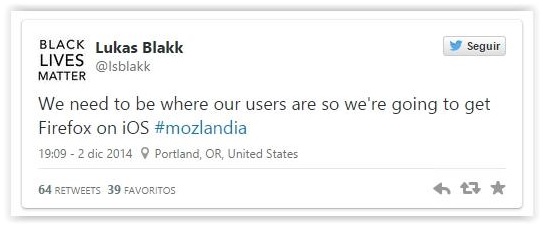
This means they will have to use the web engine proposed by Apple, which is designed to ensure control over the code and prevent any security issues. That's the way Google has worked it with Chrome, creating a top layer with its own appearance and functions. Rather than an improvement in the speed of the browsers, as with Chrome, we can expect better synchronization with other devices, or functions that Safari doesn't cover.
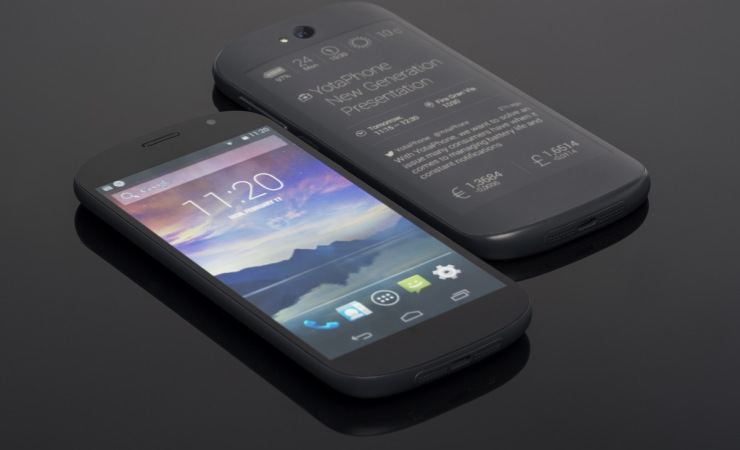
At Mobile World Congress 2013 the Russian company Yota announced what it described as a revolutionary phone: the YotaPhone. And in one respect at least it was revolutionary, being the world's first smartphone with two displays. On the front it had a traditional display. The novelty was on the back, which had an e-ink display (on the same lines as the Amazon Kindle's). Its purpose was simple: to use this type of technology to show simple content with excellent visibility and without diminishing autonomy. This year they've continued the model with the YotaPhone 2, unveiled at the Mobile World Congress and available for purchase as from this week on the company's official website. Here are the technical specifications:
● Front display: 5" AMOLED with Gorilla Glass 3 protection
● Resolution: 1080p (441 ppi)
● Rear display: 4.7" e-Ink
● Resolution: 960 x 540 (qHD)
● SoC: Qualcomm Snapdragon 800 2.2 Ghz
● RAM: 2GB
● Front camera: 2MP
● Rear-facing camera: 8MP
● Storage: 32GB
● Dimensions: 144 x 69.5 x 8.9 mm
● Battery 2550 mAh
● Connectivity: Wi-Fi (802.11a/b/g/n), Bluetooth 4.0, NFC and GPS
● Weight: 145 grams
The YotaPhone 2 specs are nothing special, considering that 2015 and the new version are just around the corner. In fact, on paper it's comparable to a Nexus 5, sharing the same processor, display size, resolution, camera and practically the battery. At Yota they know that, which is why they haven't entered the specs fray. The added value they're selling is quite different, and it's something that catches your eye immediately: the versatility of the rear display. With its "Yota Always-On Display", the YotaPhone 2 gives you up to five days reading time, because according to them that display is up to seven times more efficient than the front AMOLED display. Like last year, you can do much more than just read e-books on the e-Ink panel. You can use the rear display normally, just like you use the front one, but it can also be used to show important static information (boarding cards, maps, QR codes), even after the battery has died, thanks to its electronic ink technology. As for its software, YotaPhone2 comes with Android 4.4 KitKat in its most basic version – in other words, based on AOSP and including only certain modifications and the Google Apps, as we've seen in manufacturers like Motorola and bq. Which means that although its specs aren't the best on the market, you can expect a really smooth performance, like the Nexus 5. In view of the release date, the main drawback in this respect is that it doesn't come with Android 5.0 Lollipop – we saw KitKat when it was unveiled in February, so there's been no development since then. As for the price and availability, it will cost around €700 in 20 countries in Europe and the Middle East. Latin America and the United States will have to wait for the YotaPhone 2 until after the first quarter of 2015, when it will be released in Asia.

Tuenti Móvil has reacted. We all thought it strange that Pepephone had 4G connectivity with Movistar ahead of Tuenti Móvil (after all, this MVNO belongs to the carrier), but until today we'd heard nothing from the mobile virtual network operator of what was once a very popular social media site. But now it's official: from December 15 Tuenti Móvil will allow any customer to take out a plan with 4G. In principle, as Tuenti Móvil has pointed out, "The idea is to offer it over and above the present plan, for no extra charge, and with VOZDIGITAL included," though they haven't ruled out a last-minute change before the launch. We'll know everything there is to know on December 15. The 4G cover will be the same as that offered by Movistar, which means that it will reach more than 200 towns and cities around Spain. Tuenti Móvil has therefore beaten its competitors: it will be the first MVNO to offer 4G plans, unless someone else announces novelties between now and December 15 (given what we've seen, anything is possible). Funnily enough, a few days ago Jazztel also celebrated the arrival of 4G connectivity, though in its case it will only be available for existing customers who request its activation.
Although Microsoft had made a few noises about when the final version of Windows 10 would be released, until now the information we've had access to has been quite vague. All we knew was that Windows 10 would be released during "the second half of 2015". Now, thanks to statements from one of the Windows 10 chief operating officers, Kevin Turner, we have a more accurate date. Specifically, Turner said that the next version of Windows will be launched between the late summer and early fall of the northern hemisphere, which makes September 2015 the most probable date for the rollout. Although the actual date might be a little earlier or later, at least we now know that Windows 10 won't be released in July, November or December (it's something). The current tech preview, with its successive updates, will replace the consumer and developer previews, now ruled out. And although the initial calendar presented on September 30 included a supposed "developer preview", presumably published after the now forgotten consumer preview, Mary Jo Foley has announced that there won't be a separate preview for developers after all and that all the previews will be rolled into one: the current tech preview, which will receive updates on a monthly basis from January, as we'd already mentioned here. And on subject of rumors, Foley says that according to her sources (which are rarely wrong, we have to say), the long-awaited tactile version of Office, designed for tablets and smartphones with Windows, will be released at the same time as Windows 10 and Office 16 for desktops, all as a joint rollout.
